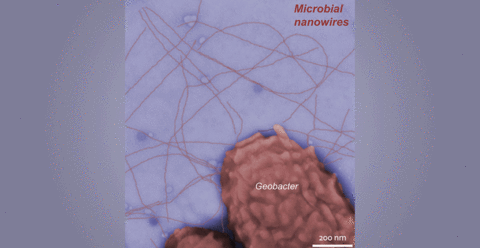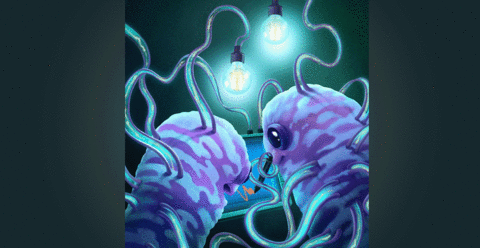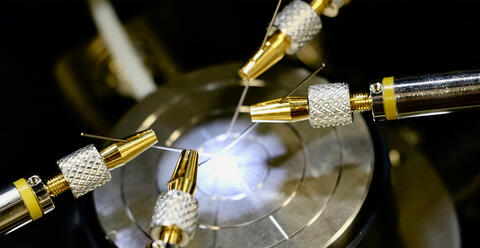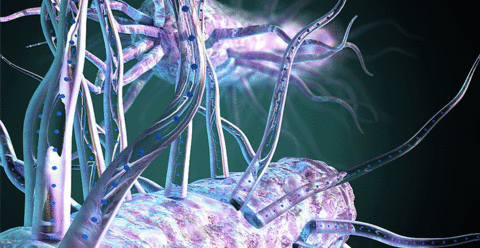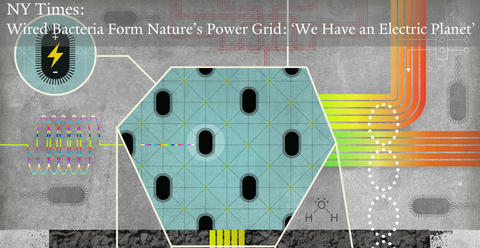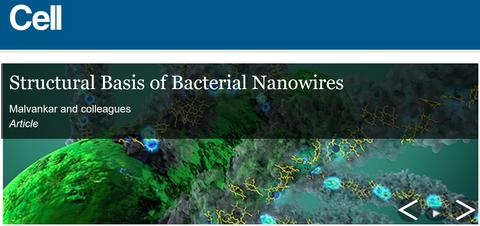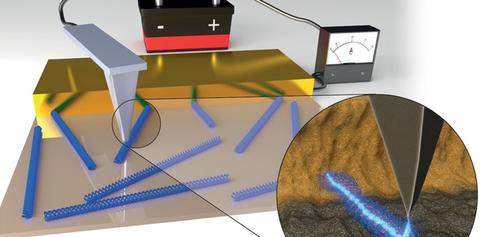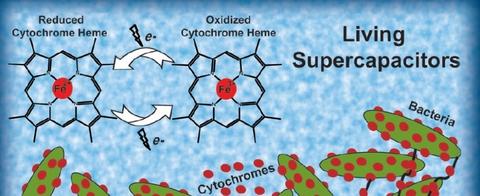Protein Nanowires Lab
Wiring Cells: Imaging and Control of microbial functions via natural and synthetic protein nanowires
“Life is nothing but an electron looking for a place to rest.” - Nobel Laureate A. Szent-Gyorgi
Electron transfer is central to all life processes. To avoid damage, organisms have evolved strategies to eliminate the surplus of electrons created by their metabolic processes. Most of these strategies involve transferring electrons to soluble oxygen-like electron acceptors acting as electron sinks. However, microbes that live in areas with limited or no oxygen, such as those that reside in the deep ocean, in soil, or the human body, have evolved strategies to export electrons to extracellular acceptors such as minerals or other bacteria. Geobacter uses long, thin, conductive filaments called “nanowires” to export electrons. Nanowires are fundamental to global environmental processes, including methane degradation, a major greenhouse gas & are also required in some infections.
Geobacter nanowires have intrigued the scientific community since they were first identified in 2002. Until recently, nanowires were considered Type IV pili (T4P) polymers of the PilA-N pilin subunit, partly because T4P is required for electron transfer. However, our lab showed that PilA-N pairs with a second protein, PilA-C, to form a T4P structurally inconsistent with electron transfer4. We further showed that Geobacter produces additional filaments comprising cytochrome subunits that could transfer electrons through a chain of heme groups2,5. We are now testing our hypotheses that (i) these cytochrome filaments are the electron-conducting nanowires and (ii) the role of T4P in electron transfer is akin to a piston to secrete cytochrome nanowires on the bacterial surface. Our team is now exploring nanowires’ structure, assembly, and electron transfer mechanism and evaluating their role in bacterial respiration, communication, and pathogenesis. By combining experimental and computational studies, our team is addressing three key questions:
- How do microbes build & use nanowires?
- How are electrons transferred from the bacterial cytoplasm to surface-displayed nanowires?
- Can nanowire conductivity be tuned using light, pressure, temperature, electromagnetic fields, and non-natural ‘click’ chemistry functionalities to control bacterial behavior?
Projects involve structural studies, genetically engineering nanowire conductivity, nanoscale electron transfer measurements in nanowires and living biofilms, spectroelectrochemistry as well as building and experimentally-testing computational models, through ongoing collaborations with Batista and Brudvig (Yale, Chem.) and Lisa Craig (Canada), Olivera Francetic (France), and Carlos Salgueiro (Portugal).
We have several interdisciplinary projects embedded in these larger goals that would be great rotation projects as they provide training in a variety of biophysical, molecular, and synthetic biology as well as biochemical techniques and are likely to yield positive results/publications within the rotation.
Please come chat with the PI or with one of my laboratory members to match your interests with our training opportunities. Rotation projects are experimentally or computationally oriented with possibilities of combining both and no prior background in a specific discipline is necessary.
Join our lab meetings either in person or via zoom: Monday 12:30 PM. We can adapt our lab meeting schedule to accommodate your class schedule.
Lab’s policy on career development: Among lab’s foremost goals is the development of the next generation of interdisciplinary scientists who will play vital roles in advancing biological sciences. Our My philosophy is to train students to be self-directed learners by building a core set of discipline-specific expertise first, and then encourage them to expand beyond their core discipline to appreciate and incorporate other disciplines. We encourage all careers, especially industry and teaching (see here). For example, we have received patents, Blavatnik Innovation Award and working with Nucleate Activator cohort to commercialize various nanowire-based technologies.
